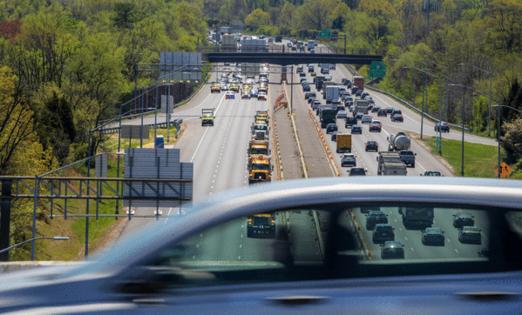Johns Hopkins engineers use artificial intelligence to predict car crashes
Published in Science & Technology News
If you change the timing of a traffic light from 20 seconds to 30 seconds, a new artificial intelligence tool developed by Johns Hopkins University researchers can predict how many more — or how many fewer — accidents will happen at that intersection.
“These are complex events affected by numerous variables, like weather, traffic patterns, roadway design and driver behavior,” said senior author Hao “Frank” Yang, an assistant professor of civil and systems engineering at Johns Hopkins. “With SafeTraffic Copilot, our goal is to simplify this complexity and provide infrastructure designers and policymakers with data-based insights to mitigate crashes.
“Generative AI has a big potential to improve the trustworthiness of accident prediction,” he continued.
Yang’s team of researchers hopes to help reduce the number of crashes and fatalities that occur each year. Nature Communications published their work in October. The team’s AI uses large language models to process, understand, and learn from massive amounts of data. SafeTraffic Copilot was trained using descriptions of more than 66,000 accidents, including road conditions, numerical values such as blood alcohol levels, satellite images and on-site photography.
The model can evaluate both individual and combined risk factors, offering a more detailed understanding of how these elements influence safety.
It can also tell decision-makers how much faith to place in its predictions, Yang said, which are known as confidence scores. These confidence scores are crucial, he said, because artificial intelligence is a black box — no one knows how it makes decisions. This uncertainty has previously deterred AI’s use in high-risk settings like traffic safety.
On Maryland highways so far this year, 381 people have been killed in crashes, according to data from the Maryland Highway Safety Office. Fatalities have steadily risen over the past decade, from 466 deaths in 2013 to 621 in 2023.
Yang’s model shows that alcohol and aggressive driving are the most dangerous factors, contributing to three times more crashes than other causes.
Currently, Maryland and other states use another type of artificial intelligence called machine learning, Yang said, in which a computer is shown comprehensive data from past accidents to assess the safety of individual roads and intersections.
“With machine learning,” he said, “if a sample is not similar to your training samples, you cannot generate a prediction. Generative AI can give clear ‘what-if’ capabilities; If you change the timing of this traffic light … what will happen?”
SafeTraffic Copilot improves its predictions with additional information, allowing customization for different states or cities, Yang said.
“I really want to benefit our local communities of Baltimore City, Baltimore County and Maryland,” he said.
The use of large language models means the artificial intelligence can also adapt to traffic conditions in other countries and cultures, Yang said — as easily as providing a paragraph describing the differences.
“I also want to expand this research to other countries,” he said. “In South Asian countries like Taiwan or the Philippines, most crashes are motorcycle crashes, and the way they drive is different as well. With previous models, incorporating drivers’ behavior or cultures is impossible.”
_____
©2025 Baltimore Sun. Visit baltimoresun.com. Distributed by Tribune Content Agency, LLC.







Comments